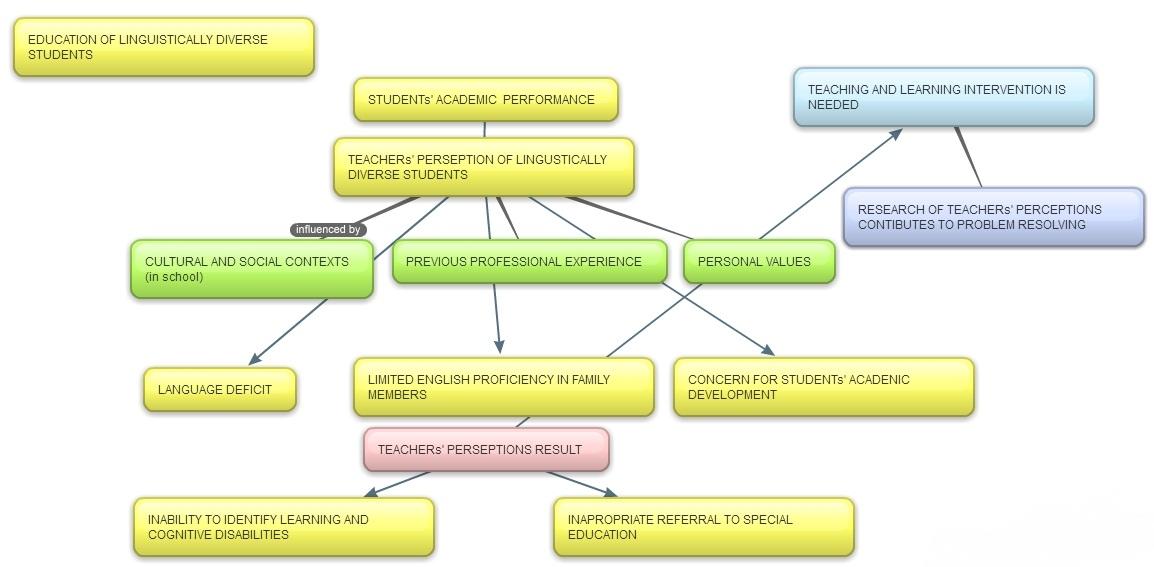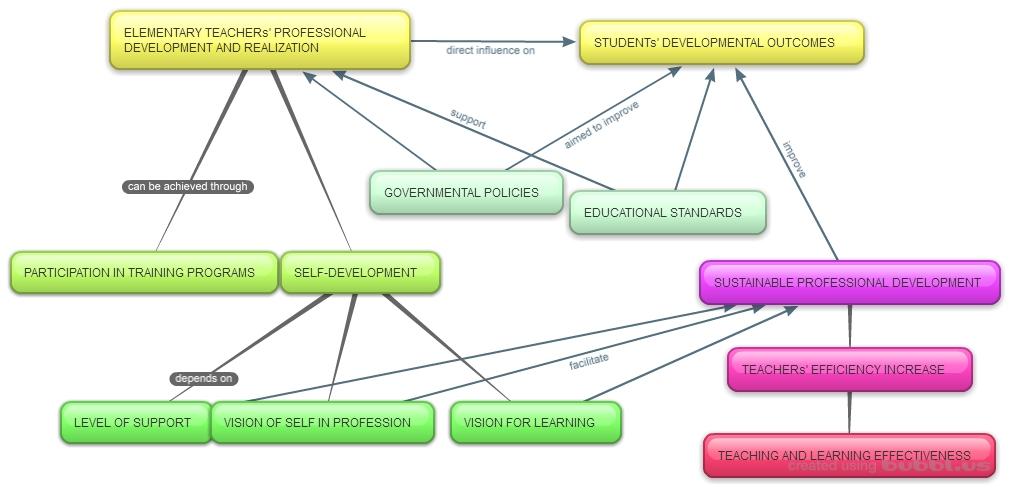Research Organization: Concept Map
The concept maps are the software tools that may be effectively used for the systematization of information and its storage (Martelo, 2011). The developed concept maps include the main ideas introduced in the reviewed articles. The tool allows the readers to arrange the information in a particular structure and identify the cause-and-effect interrelations between the concepts. The use of the concept maps is efficient in the case when a researcher needs to keep in mind and investigate a large amount of information. It provides an opportunity to add new concepts and interrelations between them or easily make corrections.

The given concept map represents the summary of the study by Greenfield (2013) investigating the elementary school teachers’ perceptions of linguistically diverse students. The map indicates that students’ academic performance may be largely affected by the teachers’ perceptions which, in their turn, are influenced by the social and cultural contexts in which a specialist works, the personal experiences, the personal characteristics, and values.
The case study findings make it clear that the teachers frequently perceive the linguistically diverse students in terms of language deficit and lack of language proficiency (Greenfield, 2013). Moreover, the students are associated with the challenges in the assessment of their abilities that may lead to the misappropriate referral to the special education programs. Thus, the comprehension of teachers’ perceptions and their interrelations with the diverse students’ development may facilitate the teaching and learning intervention aimed at the improvement of educational outcomes for all elementary students.

The concept map summarizes the main ideas introduced in the study by Brown and Inglis (2013) analyzing the main constructs of teachers’ professional realization and the extent of its impact on the students’ developmental outcomes. It is observed that teachers’ level of competence influences the students’ academic achievements. Nowadays, the officials attempt to improve both academic performance in children and professional performance in teachers through the adoption of new policies and the introduction of educational standards.
The findings of the case study demonstrate that the teachers can achieve better results in professional development through participation in programs that provide a sufficient level of support, assist in the generation of vision for learning, and professional growth. In case the given aspects of teachers’ development process are considered in training, the significant effectiveness and efficiency increase can be achieved. And when the professional development and realization are associated with sustainability, it is possible to improve the students’ performance as well.
Conclusion
The concept maps proved to be effective tools for summarizing information and patterning the ideas based on the character of interrelations between them. By looking at the designed concept map, the researcher may deploy the concepts to the particular contextual situations and expand the information through the inclusion of new thoughts.
References
Brown, A., & Inglis, S. (2013). So what happens after the event? Exploring the realisation of professional development with early childhood educators. Australasian Journal of Early Childhood, 38(1), 11-15. Web.
Greenfield, R. A. (2013). Perceptions of elementary teachers who educate linguistically diverse students. The Qualitative Report, 18(47), 1-26. Web.
Martelo, M. L. (2011). Use of bibliographic systems and concept maps: Innovative tools to complete a literature review. Research in the Schools, 18(1), 62-70. Web.